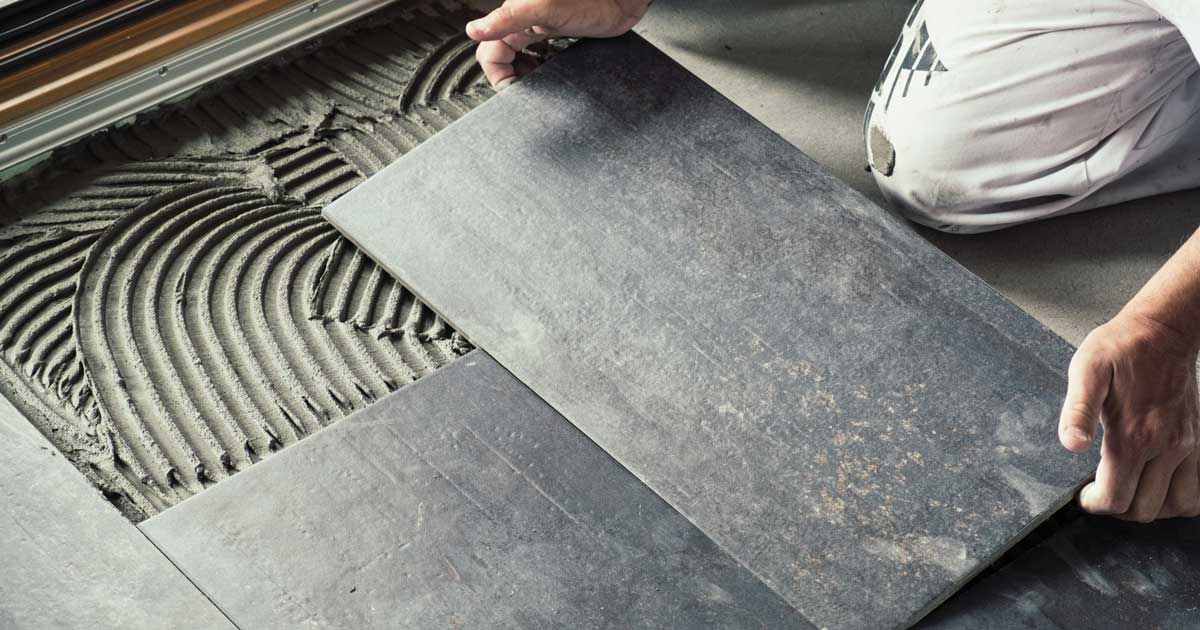When tiling and waterproofing fails
22 Jul 2024, Insurance, Learn, Prove Your Know How

Tiling can add value and appeal to any kitchen or bathroom – when it’s correctly installed. Insurance expert Ben Rickard explains what builders can do to help mitigate the risk of tiling failure, with help from Tile Association of New Zealand founder Brendon Manson
The two areas in any home that are often the talking point are the kitchen and the bathrooms. This is where the most money per square metre is invested and there is no doubt that a tiled bathroom presents the wow factor. However, If poorly done, it can be a nightmare from hell.
In February 2023, a Ministry of Building, Innovation and Employment (MBIE) regulatory reform consultation document noted:
“Poor waterproofing often results in failures, leaks and costly repairs, which would be lessened greatly by better regulation in the area… waterproofing is a minor part of overall construction costs, but accounts for the vast majority of building defect complaints and huge costs in remedial works.
“Many building leaks stem from bathrooms and wet areas that are not properly waterproofed, which can affect the flooring and wall linings leading to mould, mildew, and rot.
“The build-up of moisture and mould can cause health hazards such as fungal infections, allergies, and respiratory illness, including asthma.”
High failure rate
Research from Tile Association of New Zealand (TANZ), which represents approximately 270 members in the New Zealand tile industry that have a desire to promote best practice, has noted the failure rate is approximately 11%, with estimates as high as 13%. Since its founding in 2017, TANZ has counted over $300m in failures, with 89% of these being attributed to the installer.
Unfortunately, these issues may not manifest themselves for months or even years – and often the builder is left carrying the can when they do. This is because, legally and contractually, you are responsible for the services supplied to your customer, who justifiably will expect you to make it right.
However, because tiling is a highly fragmented industry, it can be difficult to pin down the responsible contractor when the problem arises. This could be because they have shut up shop, simply disappeared or weren’t properly insured in the first place (and insurance is becoming harder to obtain for these issues).
Poor sector training
Despite tile installers being responsible for 90% of all membranes applied within a bathroom, the tile industry’s focus has not always been about education and training for installers. If the tiler is not correctly trained, or the installer does not fully comprehend the importance of all aspects of the application of the membrane and the associated details, then the result can be failure.
In the past, training has been basic and has often been provided by product manufacturers, who have focused on product sales, rather than best practice requirements, with some manufacturers providing as little as 30-minute product demonstrations before issuing an ‘approved applicator/licence card’. While others have provided more extensive training programs, the result of poorly trained tilers is failed, leaky showers – even when installed by approved applicators of membranes.
Although water-stops have been a requirement of AS3740 (Waterproofing of Domestic Wet Areas) since 1989, which is noted in all BRANZ appraisals, BRANZ Good Practice Guide Tiling, and most product technical data sheets, TANZ identified the lack of water-stops as a contributing factor in almost all the failed tiled showers it has assessed.
AS3740 describes a water-stop as a vertical extension of the membrane that is designed to prevent water migrating under the tiles and to contain moisture within the shower area/wet area. It also described as an integral part of the membrane application.
TANZ is working to address the issues outlined above and provide the solutions, so that the sector can be part of the Licenced Building Practitioners regime and installers of membranes and tiles can be properly trained and licenced.
Be on the safe side
How can builders safeguard their projects and clients from risk?
1. Ensure the substrate is ready and accessible to the tiler.
Time pressure and an inadequately prepared surface often contribute to membrane failure.
2. Engage properly trained installers.
Training doesn’t come from years accrued in the industry. Just because someone has done a job for 20 years, doesn’t mean they’ve been doing it correctly. You should require that your tilers have undertaken TANZ’s T.E.A.M training programme. Visit www.tanz.net.nz for a list of upcoming courses in your area.
3. Build to code.
Ensure all wet areas are built to meet E3/AS2 requirements as per the Internal Wet Area Membranes (IWAM) Code of Practice, with the use of water-stops and wall cavity protectors to contain moisture within the shower area.
These simple steps will greatly reduce the risk of possible waterproofing failures and the associated stress, conflict and cost. The ‘wow factor’ of a beautiful, tiled bathroom is trouble-free and only adds value to the home when it is done correctly the first time.
Builtin are New Zealand’s Construction Risk Management Experts. For more information visit www.builtin.co.nz, email Ben Rickard at ben@builtin.co.nz or call him on 0800 BUILTIN.
Register to earn LBP Points Sign in



